News Stories
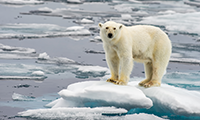 |
Satellites record second lowest Arctic sea ice extent since 1979This news story focuses on the rate at which the Arctic Sea ice has been melting since 1979 due to human-induced greenhouse gas emissions causing global heating. This rapid change has been one of the indicators that are relied on by scientists when monitoring how fast our climate is changing. It has been noted that a more evident sign of this change is the reduction in the extent of Arctic Sea ice by the end of September each year and it extends in the northern hemisphere during winter, to a maximum in March. |
 |
Governments, smart data and wildfires: where are we at?Wildfires can occur naturally, through deliberate or accidental human activity. This news story looks at various types of wildfires that have occurred in the recent past, assess their effects and the causes. Collectively, wildfires are extremely worrying as they lead to global warming by releasing CO2 into the atmosphere and they also increase air pollution leading to harmful health consequences. To curb these, relevant and real-time data should be availed to governments and other policy makers through platforms such as the World Environment Situation Room. |
 |
Perfect storm: when climate change stokes wildfires, marine heatwaves and biodiversity lossClimate change leads to some of the major environmental disasters that have become more frequent in recent years. This news story includes wildfires in southern Australia, loss of biodiversity and marine heatwaves in the Indian Ocean. This has become an emergency and calls for policymakers and for humanity at large to pay keen attention and make quick decisions to counter these rapid changes to reduce the collapse of our planetary system. |
 |
Why Australia’s 2019-2020 bushfire season was not normal, in three graphsOn record 2019 was the second hottest year since 1880, with Australia recording its warmest temperature in December of 2019. This news story focuses on bushfires that occurred in Australia in the last two months 2019 and the first six weeks of 2020. Three graphs show that the fires in Australia were not a normal occurrence. This data is derived from the UNEP’s World Environment Situation Room and it is provided for countries at all levels. |
 |
How climate change is making record-breaking floods the new normalThis news story focuses on the connection between climate change and floods. Global climate change cause severe weather patterns and are likely to result in major floods. While it is hard to make a clear connection between a particular event and climate change, we need to prepare to face more frequent and extreme hydro-metrological events. Intense flooding is likely to take place in regions where there is most human activity, on floodplains or low-lying coastal regions. It is of significance importance that greenhouse gas emissions must be reduced, so that rising global temperatures can be controlled. |
 |
Record global carbon dioxide concentrations despite COVID-19 crisisData from various monitoring centers like the NOAA reported a notable increase in carbon dioxide in the atmosphere. This news story focuses on carbon dioxide concentration in the atmosphere despite less carbon emissions caused by the COVID-19 restrictions. This causes concern to our climate and shows that crucial measures must be put in place to reduce the rapid concentration of greenhouse gas in the atmosphere. At the peak of the COVID-19, climate change indicators were still being witnessed e.g. in forest fires and bushfires churning large amounts of CO2 emissions. |
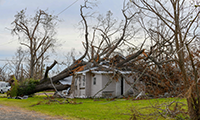 |
The data behind the blinking lights of climate breakdownThis news story demonstrates how data indicators are helpful in monitoring climate change. Some of these indicators, otherwise referred to as “the blinding lights of the climate crisis” are the wildfires in the Americas, the prolonged heat in Siberia, the Hurricane Laura, and the rate at which sea-ice is melting. In the last two years, roughly 90 per cent of data has been collected by various information-sensing devices. Such data can be found on The UNEP’s World Environment Situation Room. |
 |
Climate change: Proof in numbersThe UNEP’s World Environment Situation Room plays a significant role in providing near real-time data on various aspects of our changing environment across the planet. When some of the climate change indicators like wildfires were taking place, some scientists relied on the WESR to collect data on such environment subjects like air pollution. This portal allows the tracking of PM2.5 levels in a particular region. The purpose of this portal is to bring people together, across the planet, ranging from scientists, governments, policymakers and citizens to take action to address climate change. |
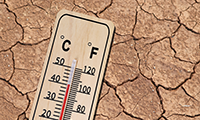 |
Global temperatures: costs continued to soar in 2021This news story highlights environmental disasters because of the increasing global temperatures. Evidence from different data and monitoring centers like the US National Oceanic and Atmospheric Administration not only recorded 2021 as one of the hottest globally, but it also states that the US experienced 20 events that are climate related, with costs exceeding One billion, with 688 lives being lost. This means there is urgent need to fast track actions to address our changing environment. This is possible with reliable and near real-time data that is available on platforms like the World Environment Situation Room. |
 |
Another wake-up call: sea ice loss is speeding upClimate change has led to rising temperatures causing previously frozen permafrost below ground to melt. This news story focuses on the alarming rate at which sea ice is receding. It is on record that the Arctic is among the fastest warming regions on earth. This is a worrying trend since carbon dioxide and methane that were formally confined below ground are released as permafrost thaw. Methane alone is more potent at global warming than carbon dioxide. If sea ice keeps receding at this rate, it will affect ocean ecosystems, global weather patterns, and ocean temperature circulation and will lead to sea-level rise. |
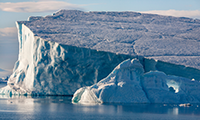 |
Record heat sends sea ice into retreat, worrying scientistsThis news story focuses on how high temperatures are contributing to the sea ice retreat. The collapse of the Conger ice shelf in Antarctica is the latest indicator of record high temperatures at both North and South Pole. It means, as these regions get warmer, more ice is likely to melt, pushing up sea levels. The frequent heatwaves are also an indication that global warming has become a trend being recorded globally. Data collection and monitoring stations like the NASA Earth Observatory show sea ice at both poles are retreating. The only way to curb this is to reduce greenhouse gas emissions. |
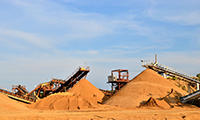 |
Our use of sand brings us “up against the wall”, says UNEP reportSand is the second most used natural resource in the world, after water. This news story highlights the use of sand as a natural resource and recommends alternative materials. In a UNEP report, “Sand and Sustainability: 10 strategic recommendations to avert a crisis”, reports that harvesting sand from sites such as rivers, coastal areas or marine ecosystems can lead to erosion, salination of aquifers, and loss of protection against storms. Sand must not just be perceived as a construction material as it is a strategic resource that plays a major role in the environment but it is being extracted at a faster rate than it can naturally replenish, requiring responsible management. |
 |
A new science-policy interface for UNEP at 50The presentation of the report of the UNEP Executive Director on the science-policy interface first identifies ozone depletion substances. Talks on lead in petrol and mercury led to formulation of policies and legislation, after science pointed out their harmful effects. Although it took time from identification to action by policymakers, it saved millions of lives and protected the environment. The report identifies the Montreal Protocol as an example of emerging science. To create a new interface, reforms must be implemented and includes shortening the time from science and action, place solutions at the front line of the science-policy interface, include all stakeholders and embrace the digital transformation. |
 |
GEMS Ocean programme officially endorsed by the UN Ocean DecadeThis news story focuses on endorsement of the GEMS-Ocean Programme by the UN Ocean Decade. This recognition helps the Programme and UNEP to collaborate with international experts and other stakeholders within the UN Ocean Decade framework. This will boost its stakeholder partnership bringing together other communities and a wide range of partners. It will also enhance the visibility, reach and momentum to carry out the GEMS Ocean vision and mission. At the Science Policy Interface, and in collaboration with UN Ocean Decade, the Programme endeavors to enable a “data to action” value chain, joining other asset knowledge holders, Member States and local communities. |
 |
How artificial intelligence is helping tackle environmental challengesArtificial intelligence (AI) helps in tackling environmental challenges. Artificial Intelligence has been identified as an important tool in data collection making more climate data available than before. Yet, how this data can be accessed, read, and interpreted and acted on is significant in managing the climate crisis. AI also plays a big part in tackling environmental challenges like in designing energy-efficient buildings, monitoring deforestation, and optimizing renewable energy deployment. The UNEP’s World Environment Situation Room is one of the digital platforms that uses AI’s capacity to explore complex, multifaceted datasets. |
Contact: unep.foresight@un.org
